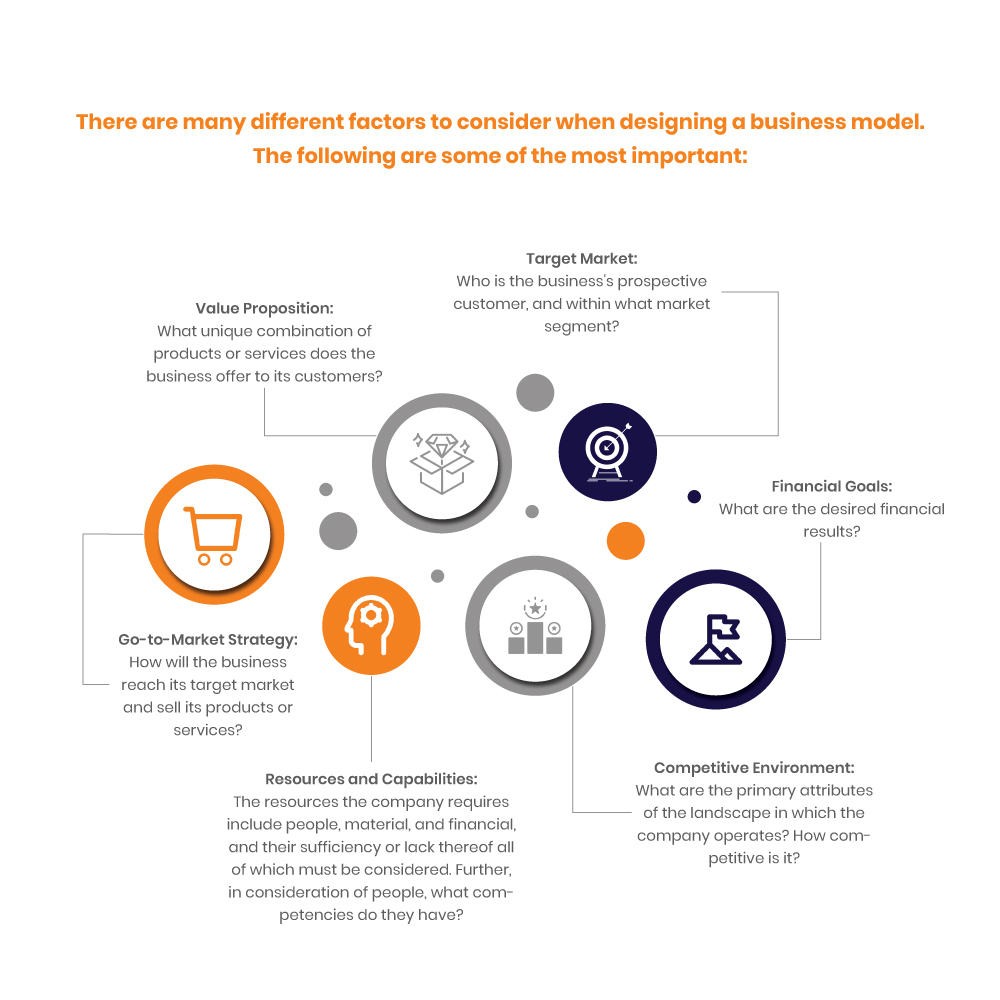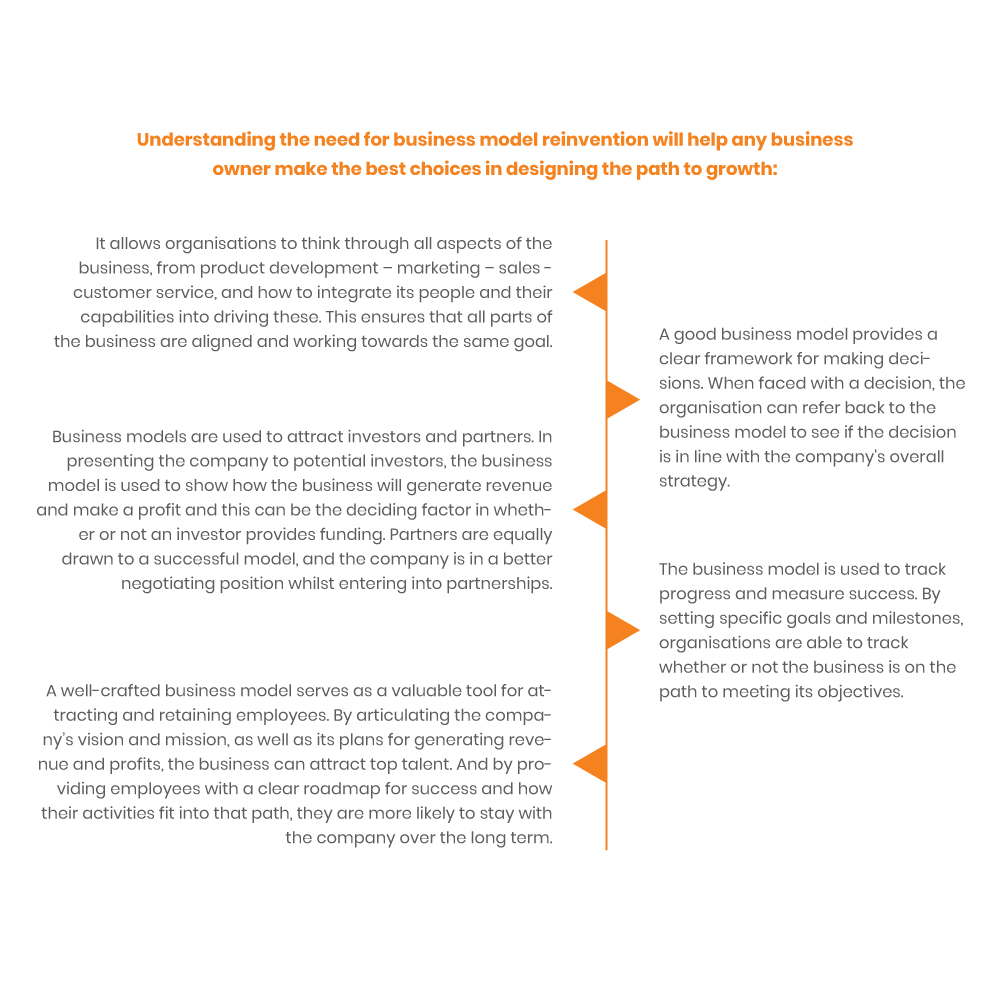BUSINESS MODEL REINVENTION AS A COMPETITIVE STRATEGY
April 26, 2023


In today’s rapidly changing business world, one of the major ways to guarantee a competitive advantage is through business model review and reinvention. Existing scholarly investigations show that the focus of reinvention is not only to outperform competitors but to especially spring a business into new areas of competitive advantage. Business model innovation is expected to become even more important for success than product or service innovation in the future due to its focus on improving the value that is to be provided to consumers and how that value would be inherently delivered to drive profitability.
A well-crafted business model serves as a valuable tool for attracting and retaining employees
Any business, whether startup or existing, needs a clear and concise business model; a plan that serves as a roadmap, laying out the strategies for the continual growth of the business. It should be regularly updated as the business grows and evolves because it describes the way a business will develop and present its product / service to the market, and drive sales. A business model determines what products / services are best for a company to sell, how it wants to promote its products / services, what type of customers it should try to cater to, as well as its fair share of the market and associated revenue streams to expect.

To reinvent is to modify the business model of an organisation, transforming it for the better by making real-time and mutually supportive changes both to its value proposition to customers and to its operating model. At the value proposition level, these changes address factors such as the choice of the target market segment, product, service offering, and revenue model; and at the operating model level, the focus is on variables such as how to drive profitability, competitive advantage, utilisation of resources, and value creation.
For example, in 2003, Apple introduced its iPod with the iTunes store, revolutionising portable entertainment, creating a new market, and transforming the company. In just three years, the iPod/iTunes combination became a nearly US$10 billion product market, accounting for almost 50% of Apple’s revenue. The company’s market capitalisation catapulted from around US$1 billion in early 2003 to over US$150 billion by late 2007.
This accomplishment is well known; what is less well known is that Apple was not the first business to bring digital music players to the market. A company called Diamond Multimedia announced the Rio in 1998. Another firm, Best Data, introduced the Cabo 64 in 2000. Both products worked well and were portable and stylish. So why did the iPod, rather than the Rio or Cabo, succeed tremendously?
Apple did something far greater and smarter than take good technology and wrap it in ostentatious design. It took good technology and wrapped it in a great business model; its true innovation was to make downloading digital music easy and convenient and to that, the company built a ground-breaking business model that combined hardware, software, and top-notch service. This approach worked like Gillette’s famous blades-and-razor model in reverse: Apple essentially gave away the “blades” (low-margin iTunes music) to lock in the purchase of the “razor” (the high-margin iPod). That model defined value in a new way and provided game-changing convenience to consumers.

“Great opportunities await businesses that can find an undeserved market, discover the needs of that market…”
Below are some key business reinvention strategies that enhance the competitive edge of a start-up or existing business:
- Implement Operational Changes
Change is not only inevitable but can also be very beneficial, the pandemic year saw many businesses undergo a total turn-around in their operational arm and whilst some businesses had to make moderate changes, other businesses were forced to transform nearly all facets of their operations. Many were unable to evolve into the required changes and were forced out of business. Fortunately, for those able to adapt, many of the changes and transformations embarked on made and will continue to make these businesses more profitable and stronger in the future.
- Be Creative with Pricing
Many businesses get in a rut, always charging the same price for their products or services. Pricing, however, does not have to be static. There can be discount pricing for sales, quantity purchases, second item purchases, and special day or hour pricing. On the flip side, there can be premium pricing for extended warranties and services, add-on products and services, as well as personalised services.
- Locate Underserved Markets and Target them
Great opportunities await businesses that can find an underserved market, discover the needs of that market, and then determine how to best satisfy those needs. An organisation can maintain its core target market while expanding into new markets, creating a unique market niche.
- Have a Greater Internet Presence
Traditional, established businesses can certainly get caught in the past while their competitors gain traction in the future with a pervasive online presence and an e-commerce site. The global pandemic has caused most individuals and employees to isolate to a certain degree and also forced businesses – whether B2C or B2B – to operate differently than in the past. To operate in the new normal, a company needs to seek expanded opportunities provided by the internet and by extension, the Metaverse.
Conclusion
Disruptive shifts in the corporate landscape have resulted in the birth of new industries and business models, and knowledge, innovation, and self-renewed change have become sources of long-term competitive advantage. Despite these truths, many businesses struggle to overcome organisational stagnation created by existing industry conventions and ‘traditional’ views.
The contradictory situation of developing new business models while simultaneously benefiting from current models may appear to be distracting to most organisations. However, systemic strategic management does not imply the complete and/or immediate abandonment of the current organisational business model. Rather, it refers to the process of initiating, experimenting with, and developing new business models alongside the management of an existing business model through the use of appropriate strategic frameworks and tools.
In today’s business-scape, the era of organisational ‘comfort zone’ is most certainly over. This means that the pursuit of business model reinvention has become a critical ongoing process.
For assistance in the review and or design of your strategic roadmap, send an inquiry to mc@pedabo.com